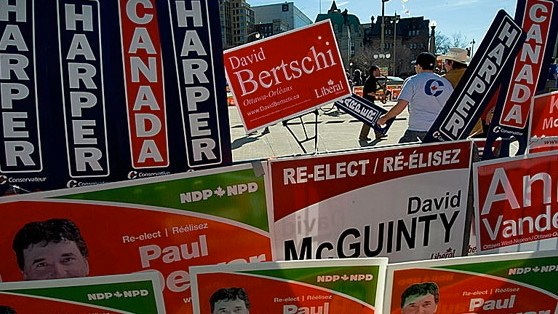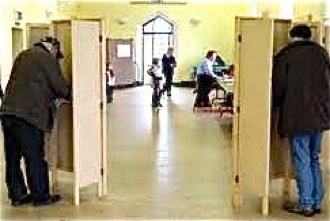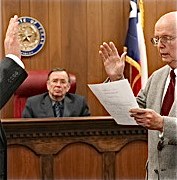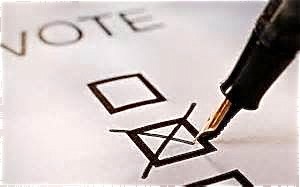Voting Reform Important
Our cups runneth over. That sentiment normally indicates joy and fulfillment. There is, however, a downside. Overflowing cups create messes that have to be cleaned.

Politically, some areas of Texas are facing overflowing cups. Mailboxes and radio and TV programs have been flooded with political ads since early last year. There have been so many pictures of candidates that accomplished artists can reproduce the likeness of most candidates from memory.
First there were primaries for both parties. Then runoffs leading to the general election in November. Locally, a state senator was promoted to state comptroller. That triggered an election with its flood of ads for a successor.
That senator’s replacement was a local representative which, in turn, set off a race for the representative’s position. No candidate in the first election in that race received 50% plus one of the votes, so now a runoff election is pending.
While all of this is going on, the media is abuzz with news and speculation about who will be the party nominees for President two years hence. Mail boxes are already bulging with solicitations of support for various potential candidates.

There is no surprise, therefore, that the U.S. has one of the lower voter participation rates among democracies. Many voters are simply exhausted from trying to keep up with what and who they are asked to vote on. Full time employees are tired from taking time off from work or running to the polls before or after work just to vote once again.
Maybe it is time to apply a new type of Three Rs to Texas politics--Reduce, Resize, and Redesign.
First, Reduce the number of times voters are expected to go to the polls. Require that all elections be consolidated during even numbered years. City, county, state, and national elections will be held together on the day and month required for Presidential elections. There, of course, would have to be provisions for party primaries, but those would have to be on the same date each election year.
Consolidation like this would result in long, possibly complicated, ballots. That would trigger the second “R”--Resize.
The Texas governmental structure is antiquated. Only the cities have a sensible business structure.
In cities, only the mayor and council members, the so-called rule makers, are elected. Administrators like the clerks, tax collectors, police personnel, etc., who merely implement or enforce the laws, rules, and regulations are hired or appointed by the rule makers. In many, if not most, cases the administrators are not changed every time the composition of the rule making body changes. There is not, for example, a new police chief every time a new mayor is elected.
So why are state and county administrators without rule making powers elected? What difference does the party affiliation of county sheriffs, the state comptroller, or district clerks make? Why are they expected to raise and spend thousands or millions of dollars in campaign expenses every four years just to continue in their jobs?
Reducing state and county elections to just the governor, lieutenant-governor, and the county judge and commissioners would shorten the ballot. The elected officials could then appoint the needed administrators as their “cabinet” as done at the federal level.
In Texas, the state ballot is further complicated with 19 judicial positions that have to be filled by election. How many voters know anything about the qualifications of the lawyers competing for judgeships?

There was a proposal many years ago to have Texas judges appointed with a requirement to face the voters unopposed periodically on a ballot that asked simply for retention or replacement. Such procedures are in place in some states, but were rejected in Texas. It is time to consider that proposal again locally.
Removing judges from contested political races would obviously further shorten the ballots.
Another complicating factor is the state constitution. This old, long document results in ten or more amendments being added to the already long ballot every two years.
Finally, the third “R.” Redesigning the ballot could add interest and reduce the possibility of fraud.
Redesigned ballots would list the candidates for each office without party affiliation indicated. In a race for county judge, as an example, the two competing candidates would be selected in party primaries, but would be listed on the general election ballots only as John Smith and Joe Bailey. The order of listing for each position would be chosen by lot rather than determined by alphabet.
There could be no straight party voting by checking one block and voters would really have to know who they were voting for when they checked a box.
So here’s the perspective.
Unless something is done to bring sanity to the way individuals who make the laws affecting each of us are elected, turnout at the polls will continue to wane.

Several ideas for reducing the growing barrage of political ads and the decline in voter participation are discussed here. The problem of escalating costs of seeking political office, even for an administrative position like clerk or tax collector, had to be delayed for further discussion.
As a beginning, let’s try the three “Rs” of Reduce, Resize, and Redesign for the ballots. Adoption of one or more of those, or some variation, might also reduce costs.
The political cups just cannot keep overflowing.
enough





